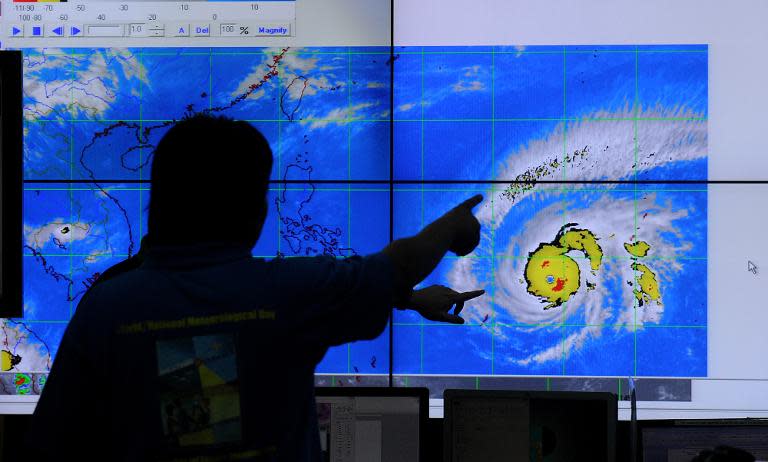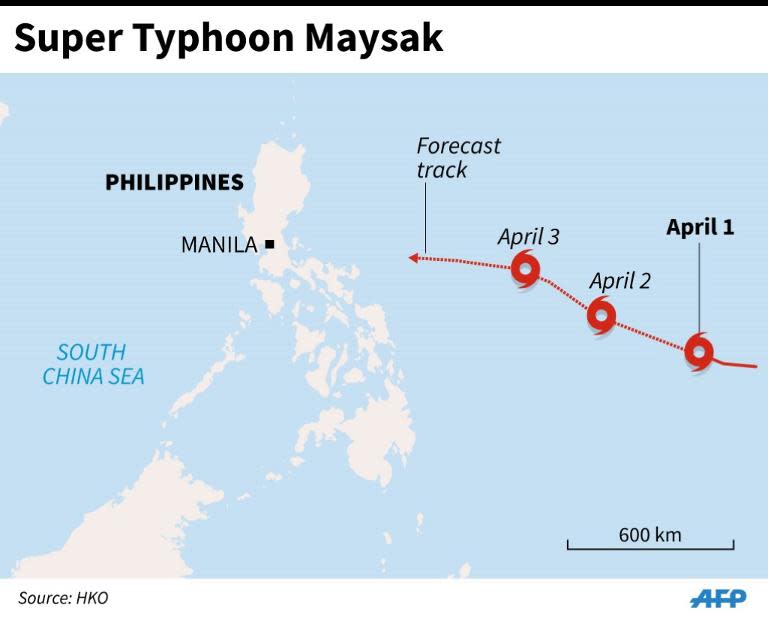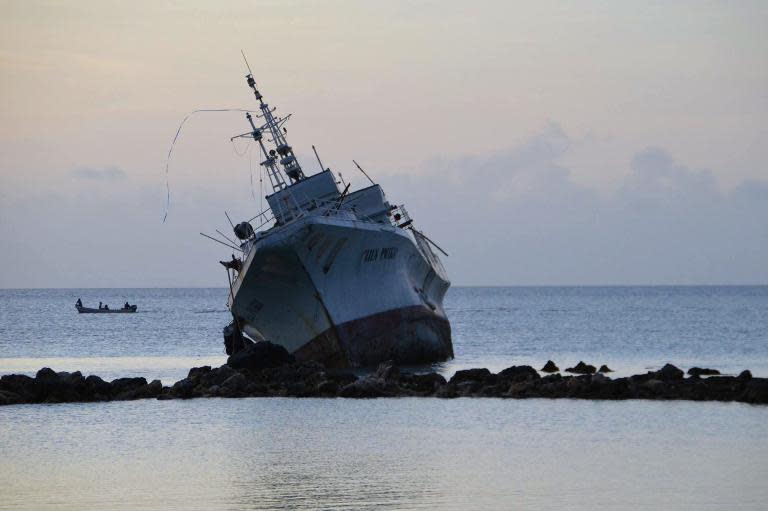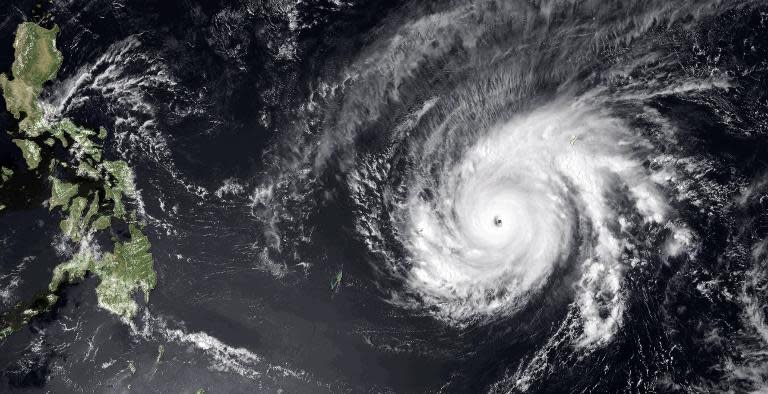State of emergency as super typhoon batters Micronesia
Residents of the Micronesian State of Chuuk were struggling to clear the roads of huge pieces of debris and return to damaged homes Wednesday as Super Typhoon Maysak cut a destructive path across the central Pacific leaving at least five dead. Crops were ruined and water supplies contaminated, with fears people faced starvation if they did not receive aid soon, after the violent storm took three days to cross the vast Federated States of Micronesia (FSM). "Governor Johnson Elimo declared a state of emergency (in Chuuk) due to damage by Typhoon Maysak, including five deaths," FSM President Manny Mori said in a statement, indicating foreign aid would be needed to support relief efforts. He did not specify where the deaths occurred, but earlier reports said five people were killed on Chuuk. There was extensive damage to "schools, health facilities, public utilities, private residences", he said, as well as "the sinking of several fishing, passenger and dive ships." Chuuk resident Hiroyuki Mori said he spent the day trying to clear the roads with other villagers using chainsaws, adding that many families abandoned their homes and sought refuge in more solid structures, including local hotels, as Maysak pounded the archipelago. "There were debris everywhere," the 27-year-old told AFP from Weno Island, which is part of Chuuk. "Trees fell on our houses and parts of the roof tore up. Everyone in my compound, which are all family members, suffered damage to their homes as well." Maysak, with sustained winds of 260 kilometres per hour (160 miles per hour), slammed into Chuuk on Sunday night and crossed the vast archipelago of 607 islands before battering the Yap group of islands on Wednesday and heading out to sea towards the Philippines. The typhoon appears to have now weakened with maximum winds down to about 190 kilometres per hour (118 miles per hour) and gusts of 225 kilometres per hour (140 miles per hour), the Philippine government weather station said. - Clearing the damage - Many residents of the islands hit by the storm were now trying to return home to begin clearing the damage and rebuilding. Officials said some houses were blown off their platforms, while other areas saw fruit trees destroyed. "The immediate need is food, water and clothing," Manny Hechanova, associate director at the University of Guam Telecommunication and Distance Education Operation, told the Pacific Daily News in Guam. "These islands are on their own, with limited food supplies. They may have to wait for three to five days and they may not be ready to wait that long. Starvation is a real possibility." Weno Island resident Mori said locals had up to a week of food, noting that "many of our food producing plants are destroyed". "We have a high supply of food right now because of the storm," he said. "But they'll be spoiled soon. I give the food about a week. Or less maybe." Victoria Bannon, North Pacific representative for the Red Cross, told AFP the charity was on the ground in Chuuk and Yap and "in full mobilisation mode". She told AFP they had access to pre-positioned relief supplies such as tarpaulins and ropes for shelter, buckets, cooking sets and lanterns, while a ship full of aid set off from the state of Pohnpei on Tuesday, stopping at islands where help was needed. Maysak, which comes on the heels of destructive Cyclone Pam that hit the Pacific nation of Vanuatu two weeks ago, is expected to weaken further before it makes landfall in the Philippines by the weekend, the Philippines government weather station said. It warned the storm would still pack destructive winds and "heavy to intense rainfall" and could even bring tsunami-like storm surges of two to three metres (6.5 to 10 feet) when it makes landfalls around the eastern provinces of Isabela or Aurora. The Philippines has itself not fully recovered from Super Typhoon Haiyan which struck in November 2013, leaving more than 7,350 people dead or missing.







